How to Make a Geometric Quilt Block Pillow
Is that big bold scrap of fabric staring at you? This quilt square project is designed to let a large print fabric shine. This simple block is quick to make, and can be used for several projects, such as a table runner or pillow. With a bit more fabric you can turn it into a place mat or table runner. The perfect quick project to turn scrap pieces into something bold and beautiful.
Supplies
- Large scraps or fat quarters of 100% cotton quilter’s fabrics: 1 large print, 1 light solid or small print, 1 medium solid or small print, 1 dark solid or small print
- 1/2 yard of white cotton fabric for the pillow lining
- 1/2 yard of fabric for the pillow back
- Coordinating thread
- 14″ square pillow form
- Universal or Sharp needle, size 75/11
- 1/4″ foot (BERNINA Patchwork Foot with Guide #57)
- Straight stitch foot (BERNINA Straight Stitch Foot #13)
- Zigzag foot (BERNINA Reverse Pattern Foot #1) or overlock foot (BERNINA Overlock Foot #2)
- Rotary cutter and self-healing cutting mat
- Clear acrylic gridded ruler
Download and print the Geometric Quilt Block Pillow Cutting and Piecing Diagrams: Geometric_Patchwork_Pillow_chart_121814.pdf
Step 1) Cut the fabric pieces.
Accurate cutting helps avoid crooked, puffy, or uneven seams in your quilt block. Use a self-healing mat, a clear acrylic gridded ruler, and a rotary cutter to cut the pieces for your quilt block.
Rotary Cutting Tips
- Self-healing mats come in different sizes. 24″ x 36″ is a good size to have, but if you don’t have a dedicated sewing space or don’t plan to use it often, try an 18″ x 24″ mat instead.
- Acrylic rulers also come in many shapes and sizes. A standard 6″ x 24″ ruler is a good start, and I’ve also found a 12-1/2″ x 12-1/2″ square ruler to come in very handy.
- Rotary cutters are measured by the size of the circular blade in millimeters. A 45 mm rotary cutter is perfect for making the kind of straight cuts needed for this project.
- Use the grid on your cutting mat to help square up fabric pieces when needed, but when measuring to cut the pieces be sure to use the gridlines on the acrylic ruler. Hold the ruler firmly on top of the fabric, and use a steady, firm, pressing motion when cutting with the rotary cutter.
Cut one of each pattern piece from the corresponding fabrics (also see downloaded Cutting Diagram):
- Piece #1 – Light solid or small print, 4″ x 3″
- Piece #2 – Dark solid or small print, 4″ x 5″
- Piece #3 – Light solid or small print, 4″ x 2-1/2″
- Piece #4 – Large print, 9-1/2″ x 9-1/2″
- Piece #5 – Light solid or small print, 2-1/2″ x 9-1/2″
- Piece #6 – Dark solid or small print, 14-1/2″ x 2-1/2″
- Piece #7 – Medium solid or small print, 14-1/2″ x 3-1/2″
Step 2) Piece the block.
Set your sewing machine for a straight stitch about 2.5 mm long.
Attach a quarter-inch foot, such as BERNINA Patchwork Foot with Guide #57, to your sewing machine.
The blocks will be sewn together using a 1/4″-wide seam allowance. Stitching an accurate 1/4″-wide seam will help your block come together with nice, straight seams and avoid pieces not fitting together as you sew on.
Patchwork Piecing Tips
- Us a quarter-inch foot to help you keep the correct seam allowance width. The BERNINA Patchwork Foot #37 is designed specifically so that following the edge of the foot will create a 1/4″-wide seam allowance.
- BERNINA Patchwork Foot with Guide #57 is similar to foot #37, but adds a metal guide at the side of the foot to help you like up your fabric piece exactly at the edge of the foot.
- Attach a seam guide to the bed of your sewing machine along the 1/4″ seam allowance mark on your stitch plate, then place the edges of your fabric pieces against the guide as you sew.
- Alternatively, place a piece of blue low-tack painter’s tape along the 1/4″ seam allowance mark on your stitch plate as a guide for your fabric.
Piecing Diagram
Start by stitching Piece #1 to Piece #2 along one 4″ edge. Press the seam allowances to one side.
Next, sew Piece #3 to Piece #2 along one 4″ edge as shown in the diagram; press after stitching.
Continue adding pieces to the block as shown in the diagram, pressing each seam as you go.
Tip: When pressing seams, be sure to press DOWN with the iron as opposed to “ironing,” or pushing the iron back and forth over the seam. Ironing (back and forth motion) can cause straight seams to go crooked. Pressing straight up and down with the iron will help your seams stay nice and straight.
Press all seams again from the back of the block when finished.
The finished block should measure 14-1/2″ x 14-1/2″.
Step 3) Construct the pillow cover.
Cut one 14-1/2″ x 14-1/2″ square of fabric for the pillow lining.
Cut two 11″ x 14-1/2″ rectangles of fabric for the pillow back.
Create a 2″ hem along one edge of each 11″ x 14-1/2″ pillow pocket piece:
- Turn under 1″ along one long edge; press.
- Turn under an additional 1″; press.
Topstitch close to the inner edge of the folded hem with a straight stitch, using either a multi-purpose foot or a straight stitch foot.
Layer and pin the pieces of the pillow together:
- Begin with the 14-1/2″ square of white cotton for the lining.
- Add the finished patchwork block, right side up, matching all edges.
- Add one pocket pillow back, right side down, matching the raw edges. The finished hem will be about 5″ from the other end of the pillow.
- Add the other pocket pillow back, right side down, on the opposite edge. The hemmed edges will overlap.
- Pin around all four edges of the pillow.
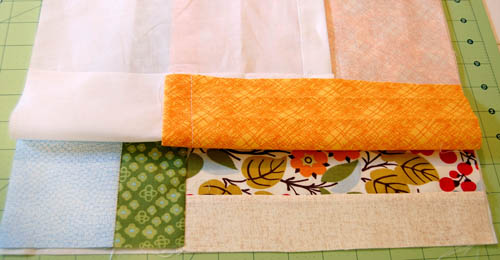
Set your sewing machine for a straight stitch of 2.5 mm long.
Stitch around all four sides of the pillow using a 1/2″-wide seam allowance.
Trim all seam allowances to 1/4″.
Attach an overlock or zigzag stitch foot to your sewing machine.
Set your machine for a zigzag or overlock stitch and sew over the raw edges to keep them from unraveling.
Turn the pillow cover right side out, gently pushing each corner from the inside to turn it.
Insert the 14″-square pillow form through the opening in the back of the pillow cover. If needed, use a little fiberfill to help fill out the pillow corners.
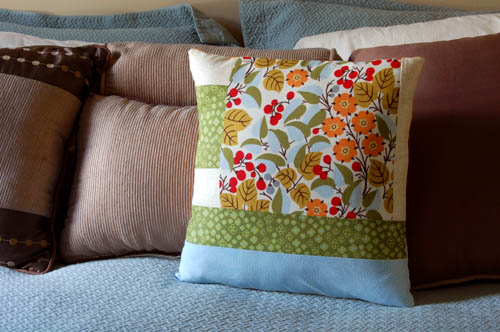
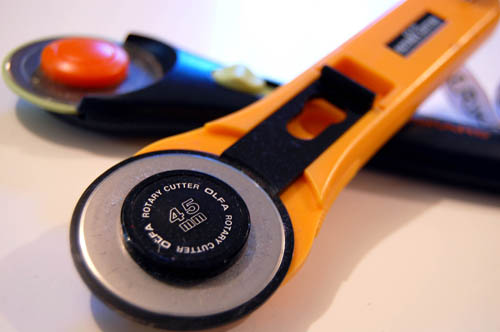
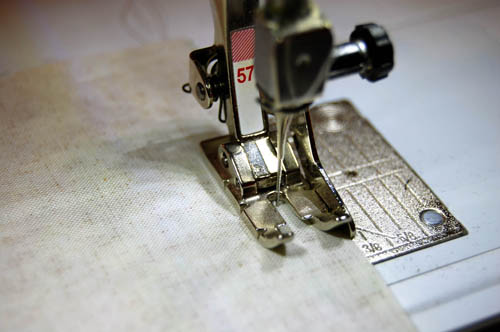
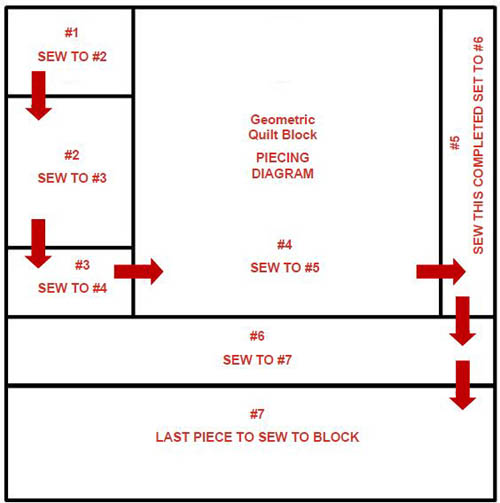
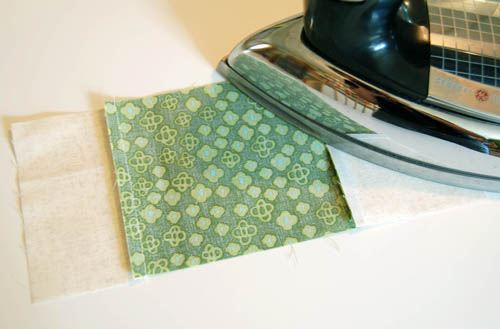
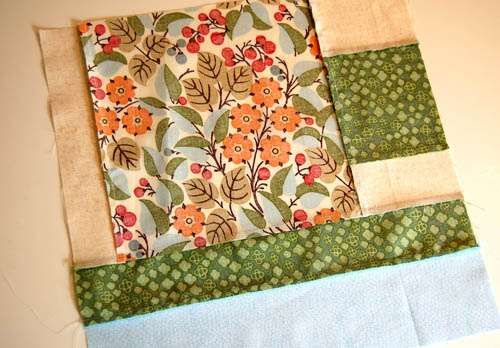
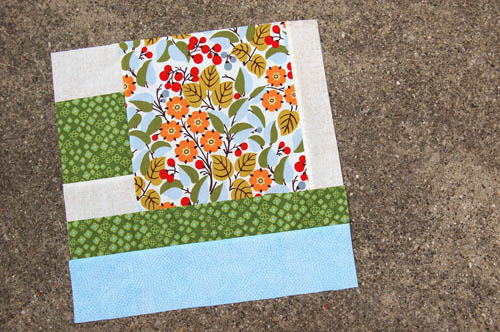
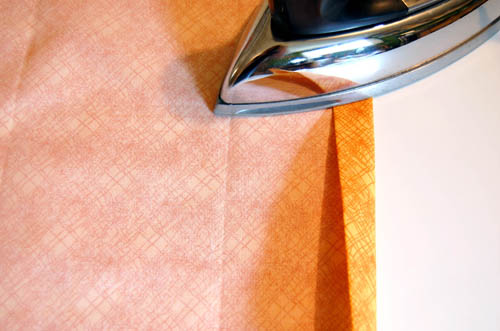
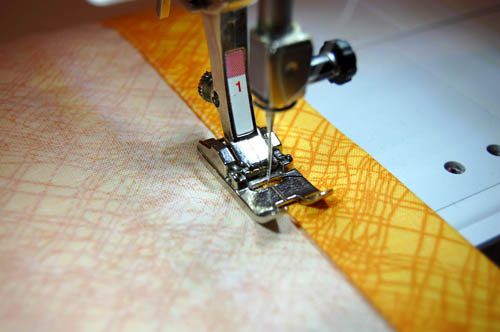
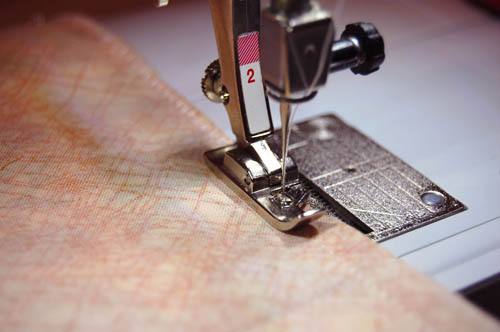
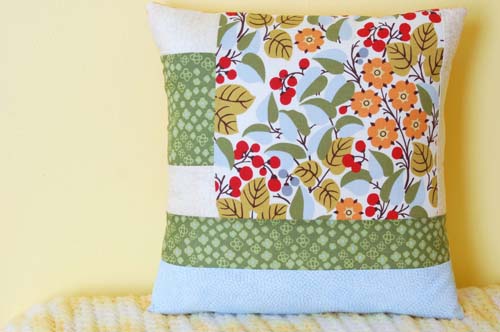
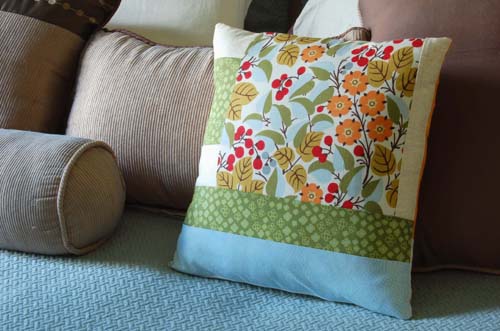




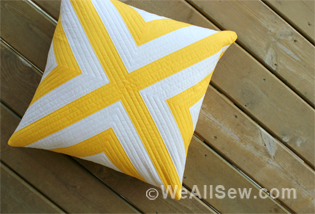
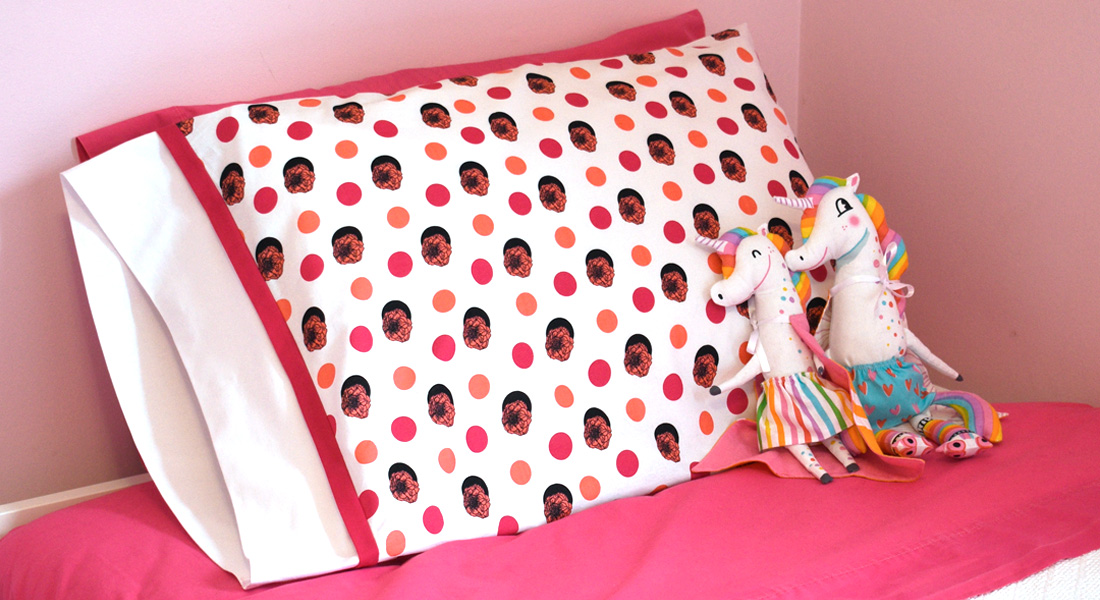
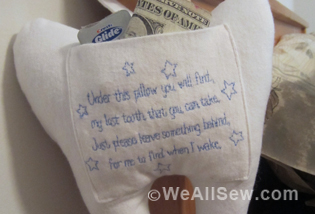
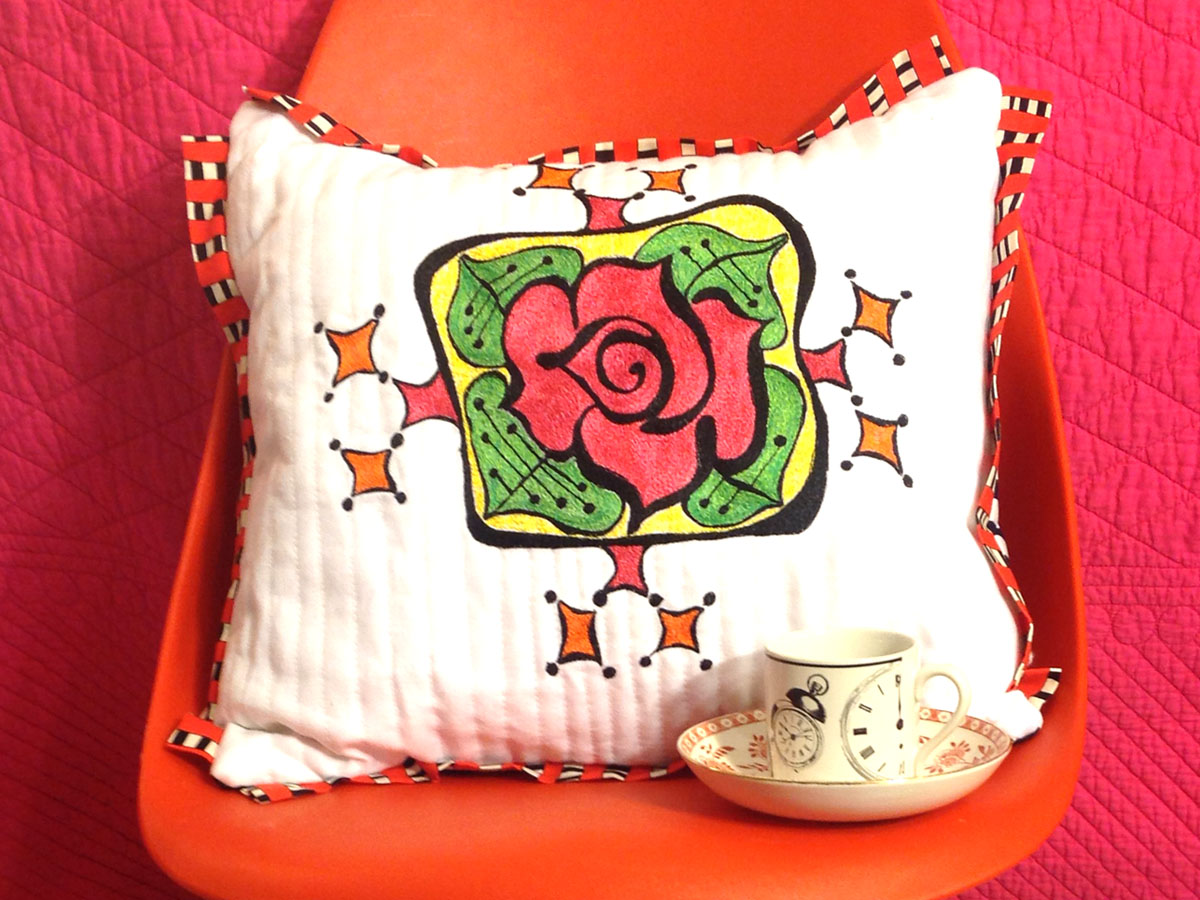
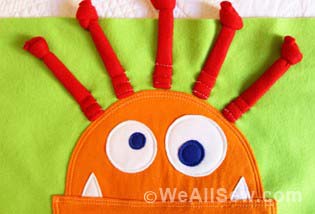
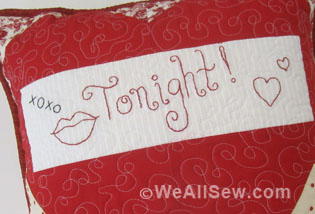
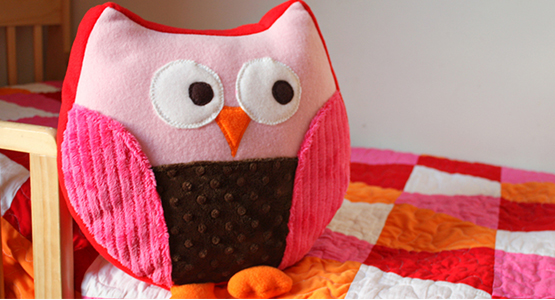
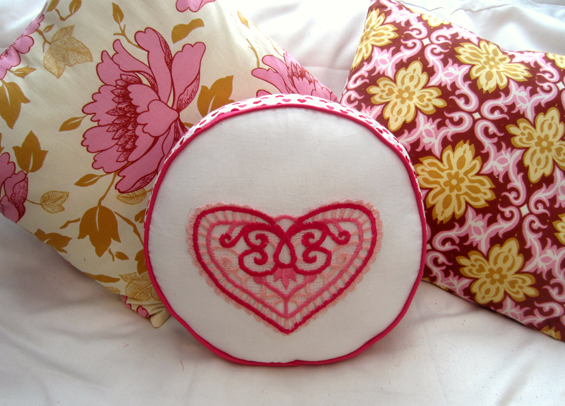
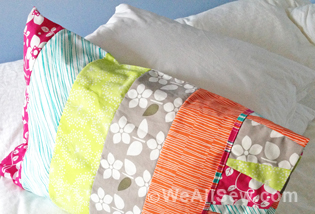
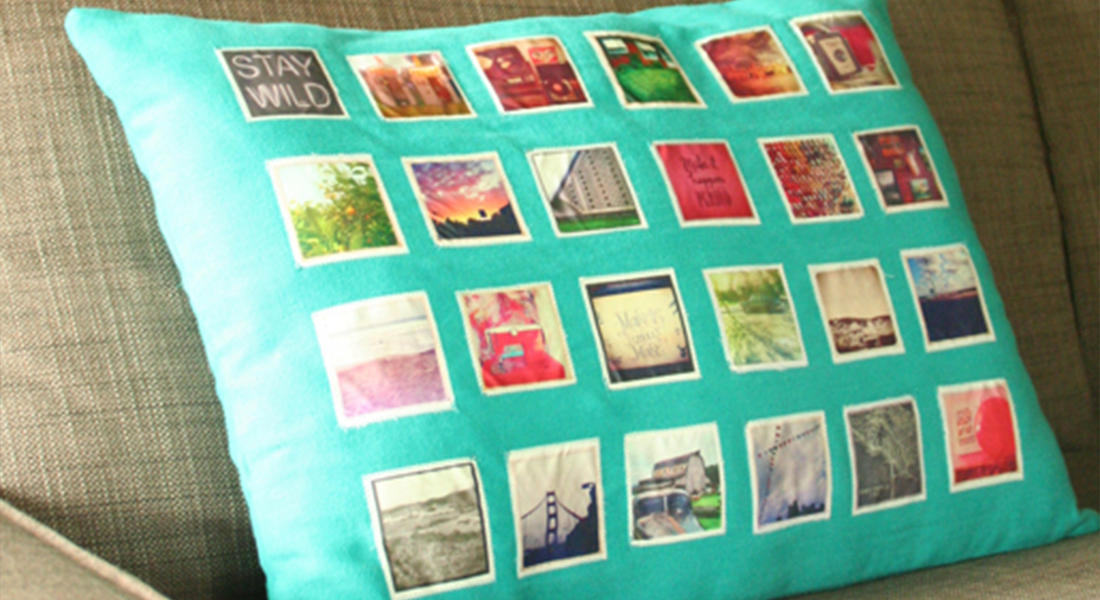
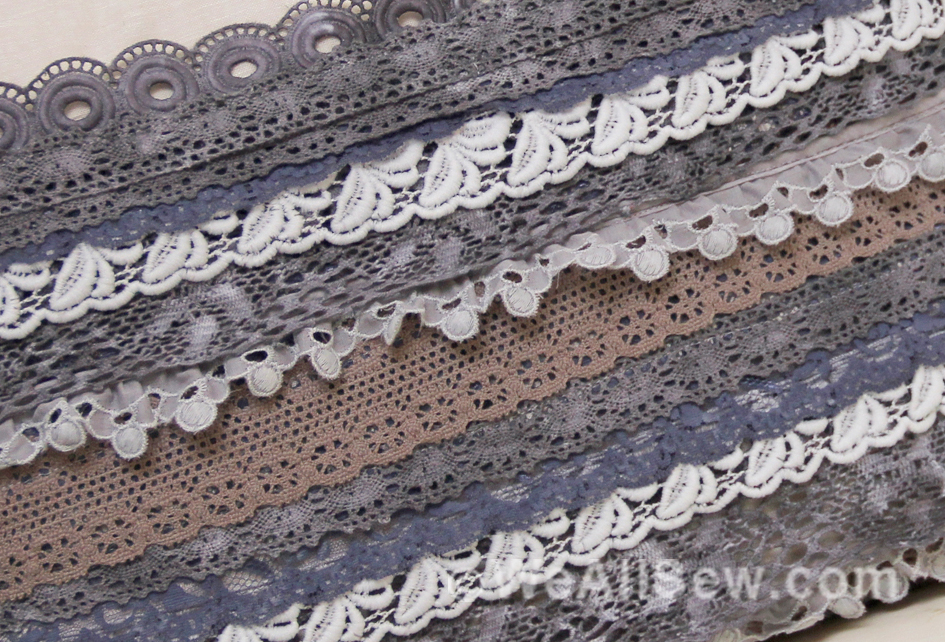
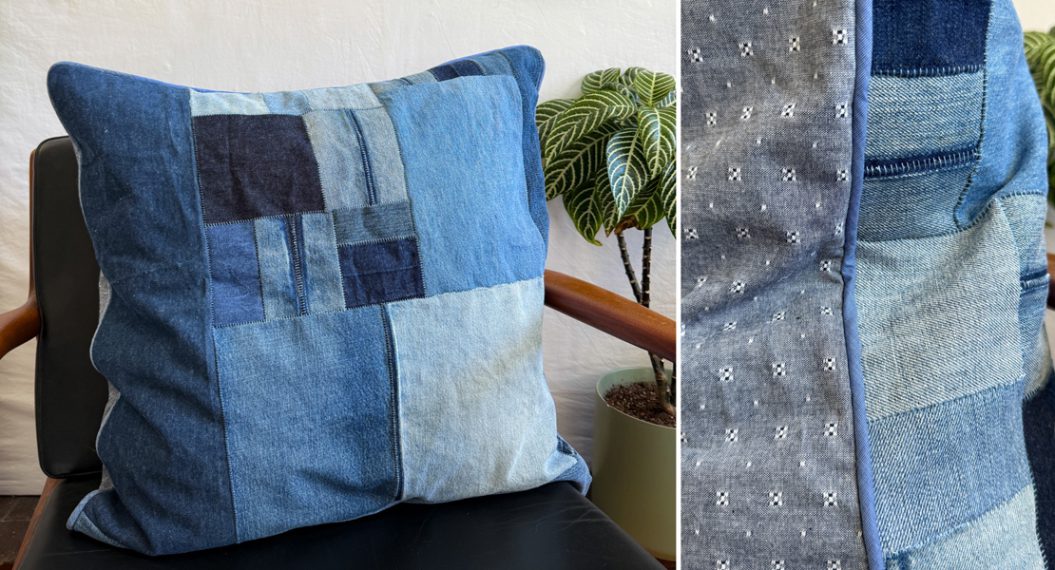
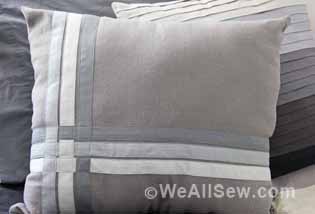
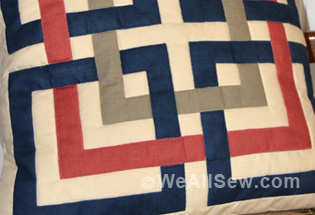
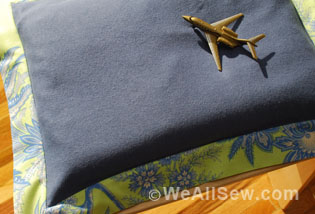

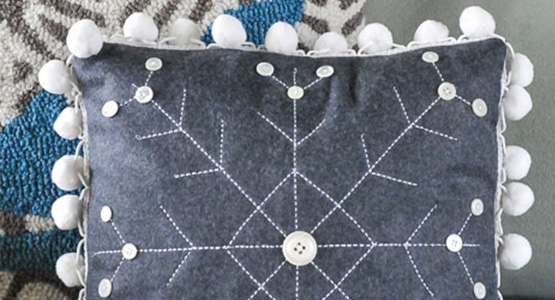
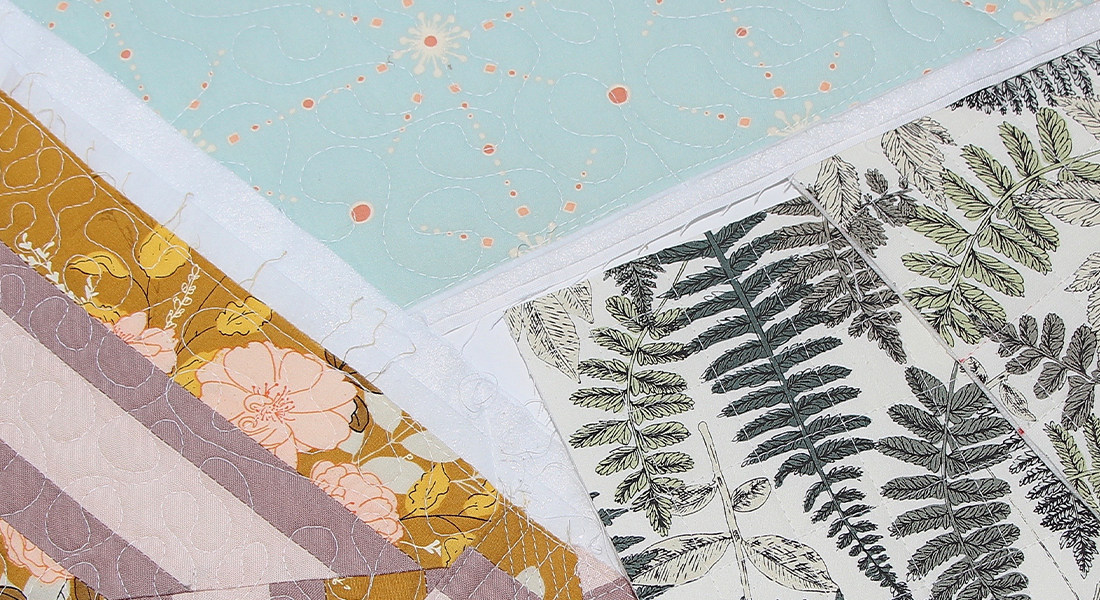
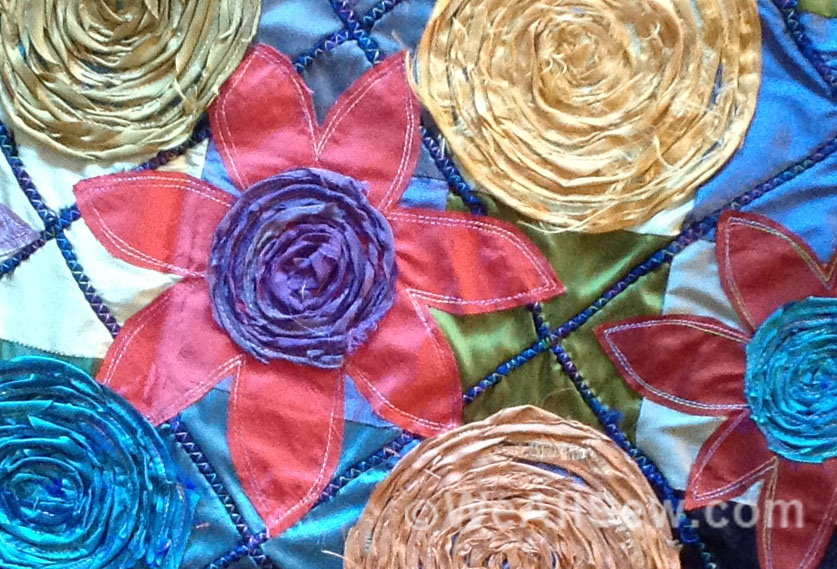
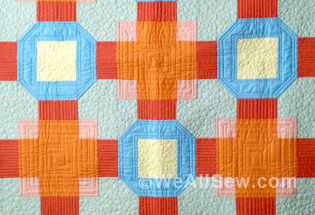
3 comments on “How to Make a Geometric Quilt Block Pillow”